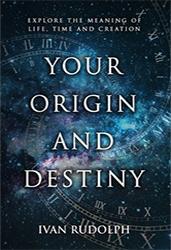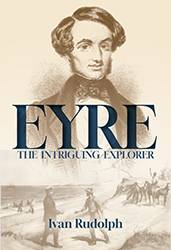War on Whites
Geoffrey Dutton wrote this about Aborigine and settler relationships in the 1830s and 1840s: “It is not in accordance with modern mythology for the good relations between Aborigine and white to be mentioned. The tragedy of Aboriginal-White relations is far more complex than the constant state of war it is now often represented to have been.” Records abound to support his statement.
In certain books and articles, it is suggested that the attacks by Aborigines on the Maria survivors, the Rufus overlanders and/or the Port Lincoln settlers were acts of war against whites taking over their land or inadvertently desecrating sacred sites.
Evidence of conflict near the Rufus does not fit the hypothesis, however. If destruction of whites had been the primary intention, they would have been followed and slaughtered or captured after the first clash just as the victors have done to the vanquished throughout history. Instead the Aborigines fell on and plundered the wagons. At the Inquiry that followed the second clash, evidence from Aborigines was that plunder had been the primary intention. In the hearts of some of the Aborigines, issues such as payback or reciprocity for unrewarded favours may have contributed to their individual motivations for attack, but it was not mentioned even once that the warriors had intended driving the whites from tribal lands.
Eyre, Hawker and Scott over the years spent much time conferring with the Aborigines who had been participants in the attacks – none mentioned that the purpose of the attacks included removing whites from their land. Pulcanta had been one of the warriors involved and spent hours talking to Eyre, Sturt and others over the years. He was unwavering that plunder had been their intention.
Similarly, the murder of the shipwrecked survivors of the Maria cannot reasonably be ascribed to an act of war – not if the evidence is looked at thoughtfully. The survivors were at first treated kindly and not as invading enemies. Evidence of the primary motives behind the subsequent killings remains unclear, perhaps plunder mixed with reciprocity.
The actions of the Battara near Port Lincoln appear more likely, particularly in the later stages, to be an attempt to drive away the white man. As such, they could be considered genuine acts of war. However, other tribes in the vicinity appear not to have joined them in this. This was the opinion of Clamor Schurmann who worked and conferred with Aborigines as their Protector. Where small numbers from other tribes did get involved, revenge and plunder appear to have been their primary motives.
Despite the tragic incidents that occurred at Port Lincoln in the early 1840s, tensions slowly eased in the area closest to the town. Further out, some settlers conducted a vindictive campaign of violence against Aborigines that progressively drove them into more distant climes or destroyed them.
The Battara had been almost wiped out by 1870, principally by disease, although bullets, poison and hunger all played a part in the tragedy. The number of other Aborigines on the Eyre Peninsula was also diminishing by then.
Germein Greer in her talk on Rage has said that Aboriginal men need to be interviewed and their attitudes probed, to discover the true causes of their dissatisfaction and anger. This is true also for history. Until we have the viewpoint of the warriors themselves, it is easy for us to make incorrect assessments of actions they took. For example, when John Charles Darke was speared in 1844 while investigating land NW of Port Lincoln, many conjectures were made as to the cause. One was he had been cruel to locals, but his deputy John Henry Theakston and others in his party refuted that – Darke had been uniformly generous and kind to Aborigines; for example, the previous day he had fed a group and given them sugar to eat as an exciting new experience for them. Similarly, causes such as payback or reciprocity or misbehaviour by others in his party unknown to Darke, or even of unknowingly having encroached on sacred sites, were raised over the years and left hanging because no one really knew.
Ah, then, it may have been a continuation of the Battara resistance to drive away all whites, mightn’t it? Or so some post-colonial thinking ran.
But in this case we have a record of precisely why the warriors speared Darke, because one man sought out the answer from the Aboriginal men involved. Some years later one of that tribe, which was not a Battara group at all, confided to J.A. Foulds that they had not previously encountered whites, and that it had been the sugar that had stirred them, never having eaten any previously, and they had seen the very big bag from which Darke had fed them and coveted it. And after the spearing, when Darke’s party retreated, they tracked the whites intending to attack again. However, the incidental firing of a gun scared them and consequently they had held back.
After his companions had buried Darke at the foot of what is now called Darke’s Hill and put a log fence around it, the whites returned to Port Lincoln following the tracks that Eyre had made four years previously.
After their departure, the Aborigines approached the grave:
There was a great palaver around the pine log fence enclosing it, and the upshot was they removed the logs and dug down and disinterred the body of poor Darke. They wanted to be sure that the grave contained a white man, and that it was the one speared, for some of them doubted their ability to kill one of the formidable strangers. They found the spear wound, or wounds, without difficulty, and after gazing on the body for some time they replaced it in its cold resting place and filled up the grave again.
Until the Aborigines provided their account, no one guessed it was specifically the sugar that had motivated the spearing, or that this particular disinterment of the body was simply to verify the identity of the dead man and not to molest the corpse.
This is not an attempt to excuse the Aborigines’ actions, but having more precise facts at least enables a deeper understanding of their motives and behaviour. Eyre was a stickler at trying to uncover the true facts for this very reason. He summarised the details of Darke’s spearing in a letter to the Governor of New South Wales, Sir George Gipps, soon after the spearing, but did not try to apportion blame for the incident. He never leapt to blame either settlers or Aborigines.



